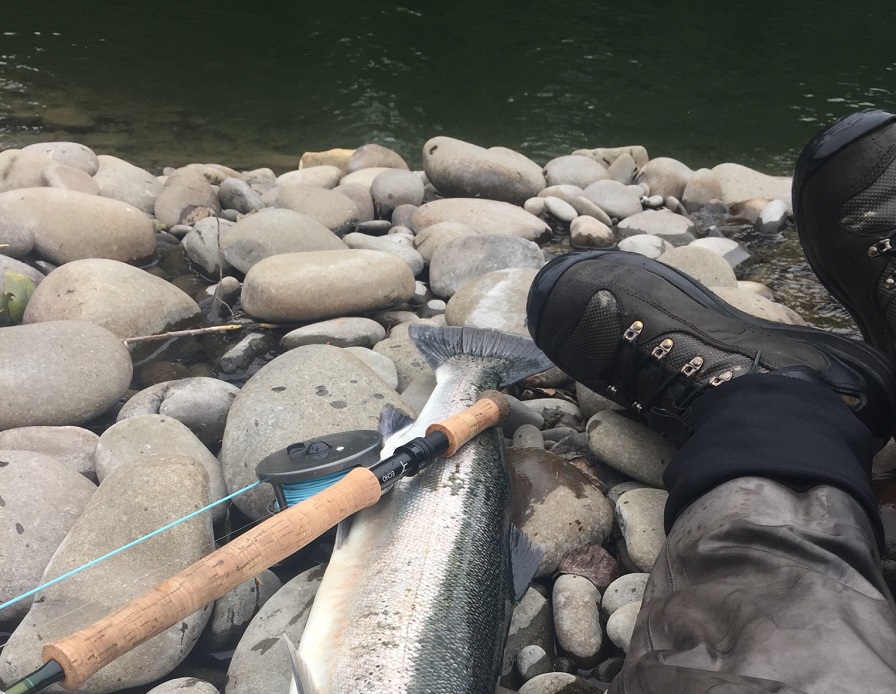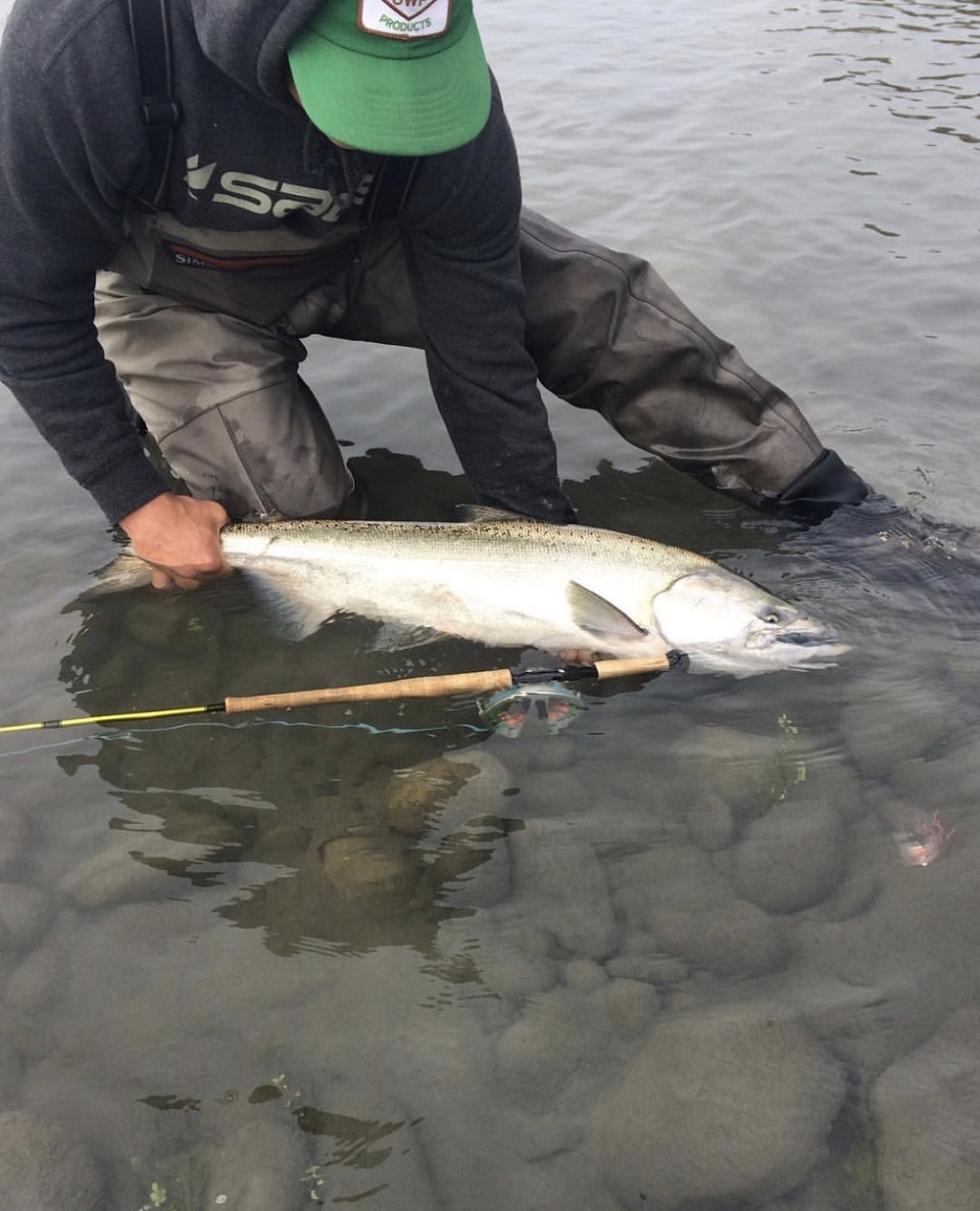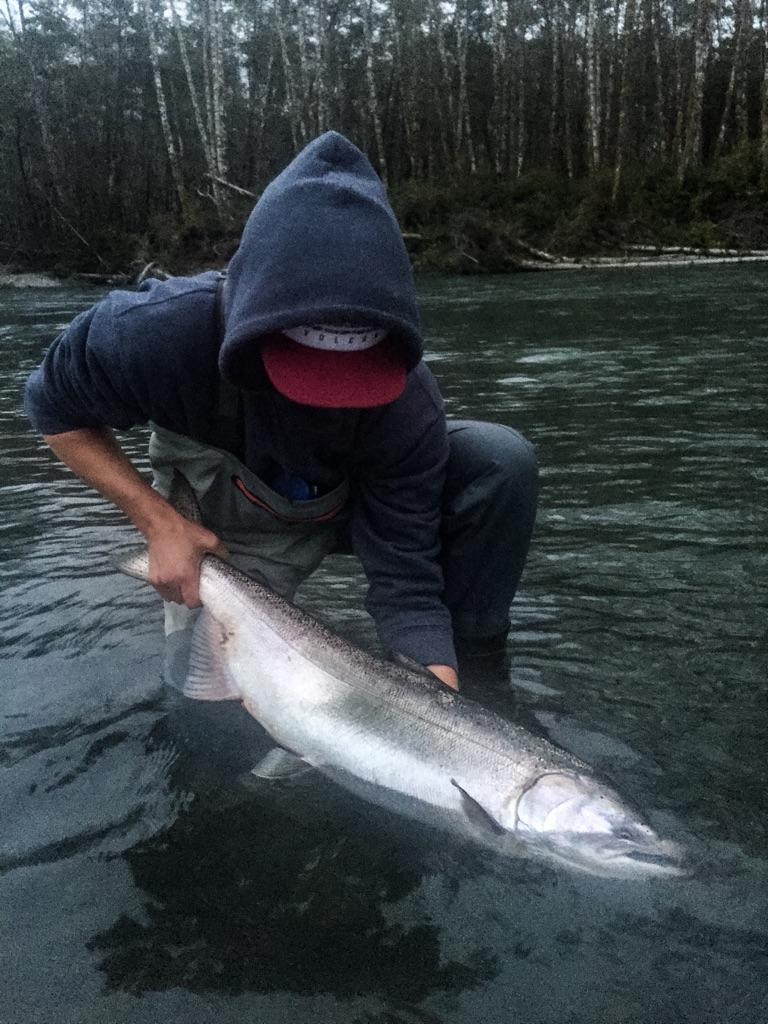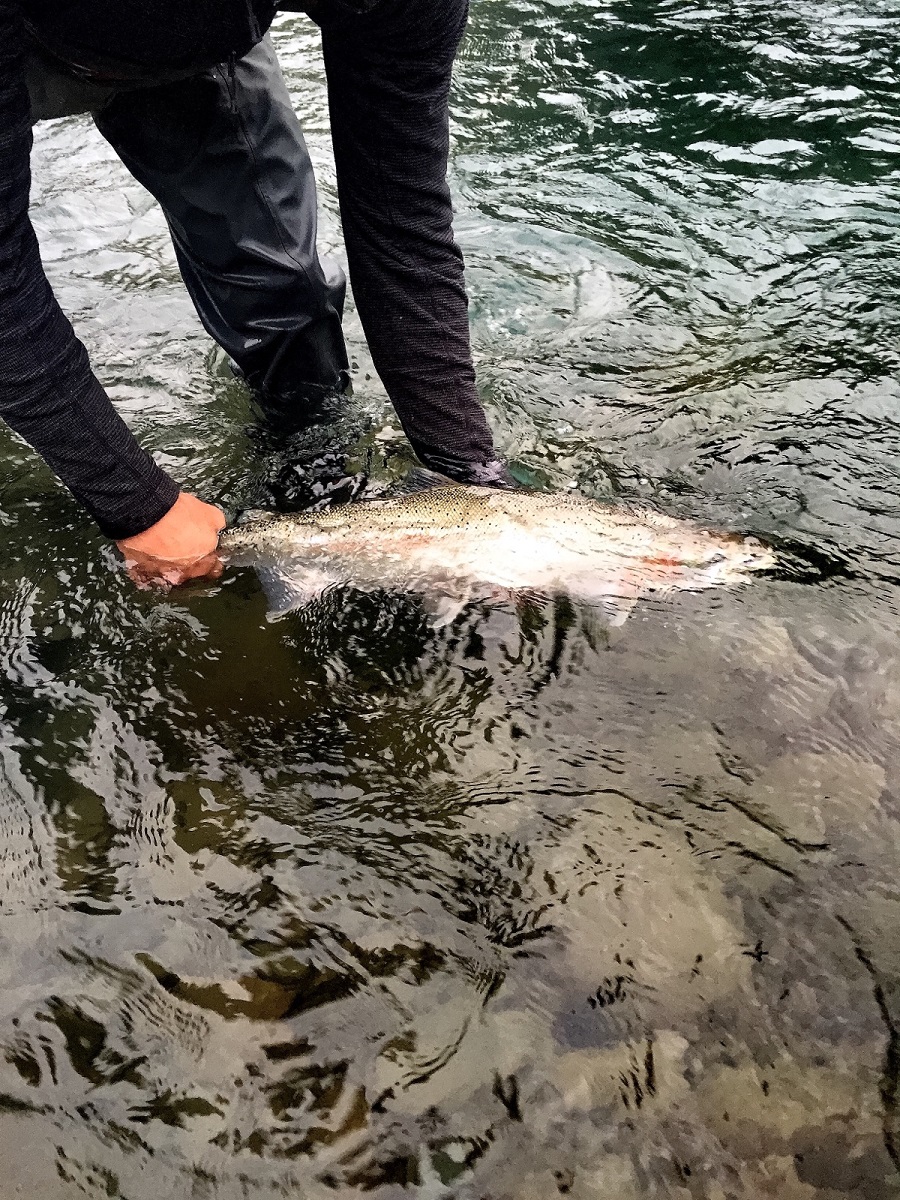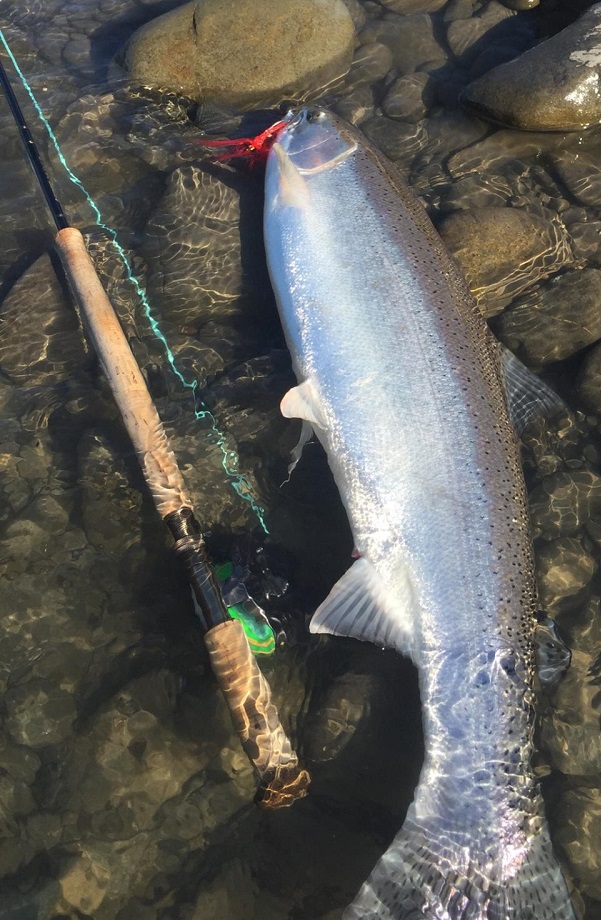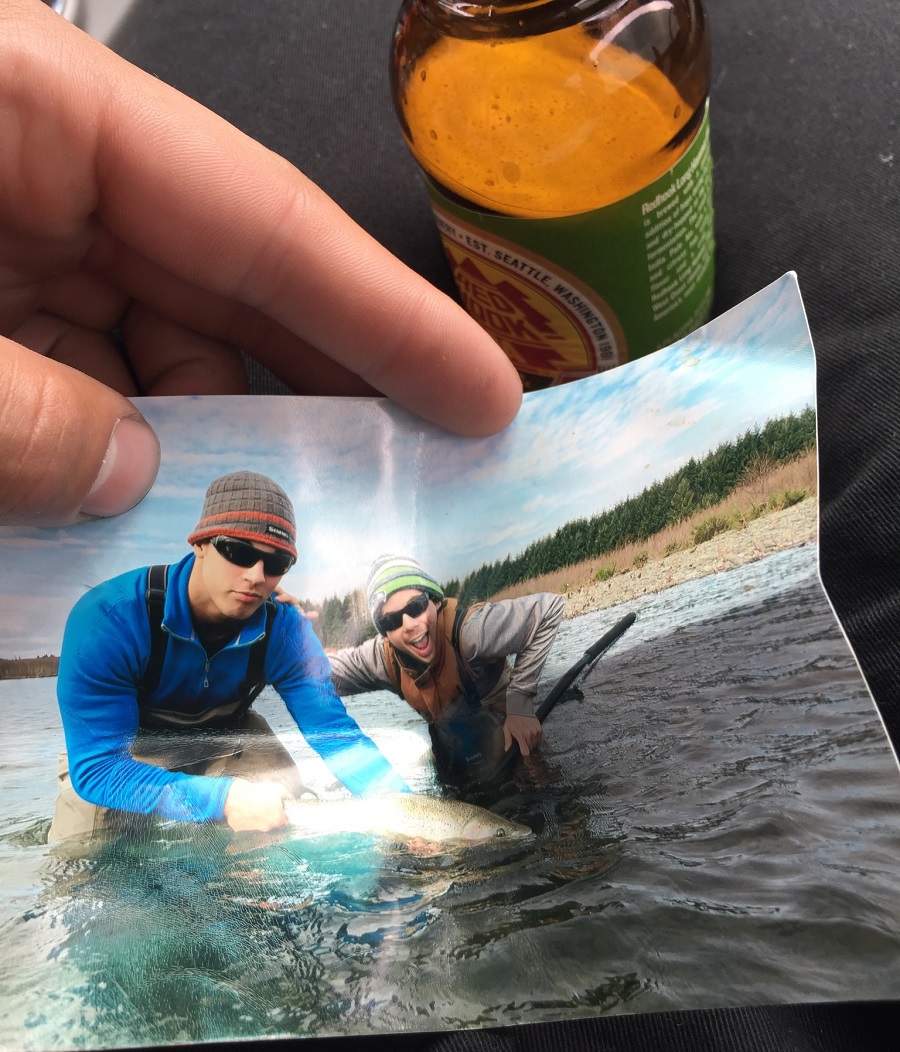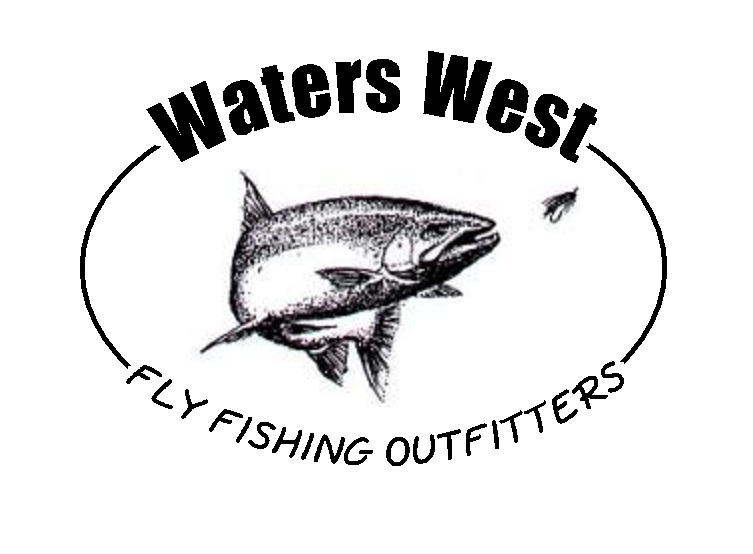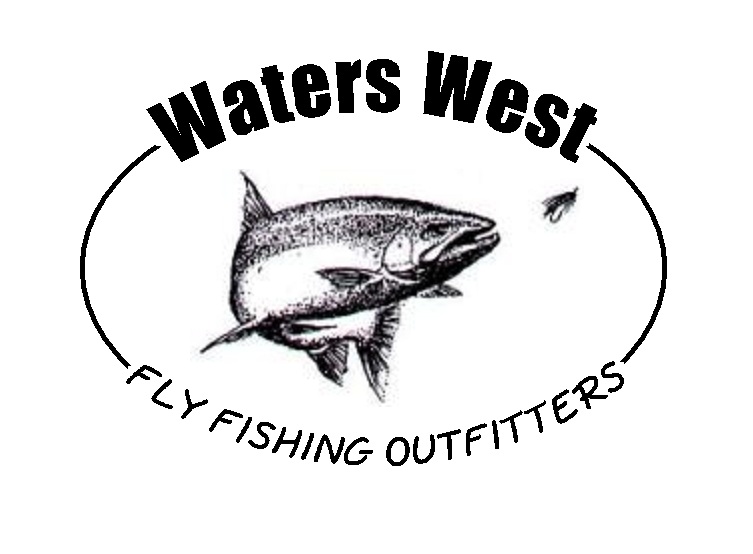
Olympic Peninsula, Wa. December 14, 2016
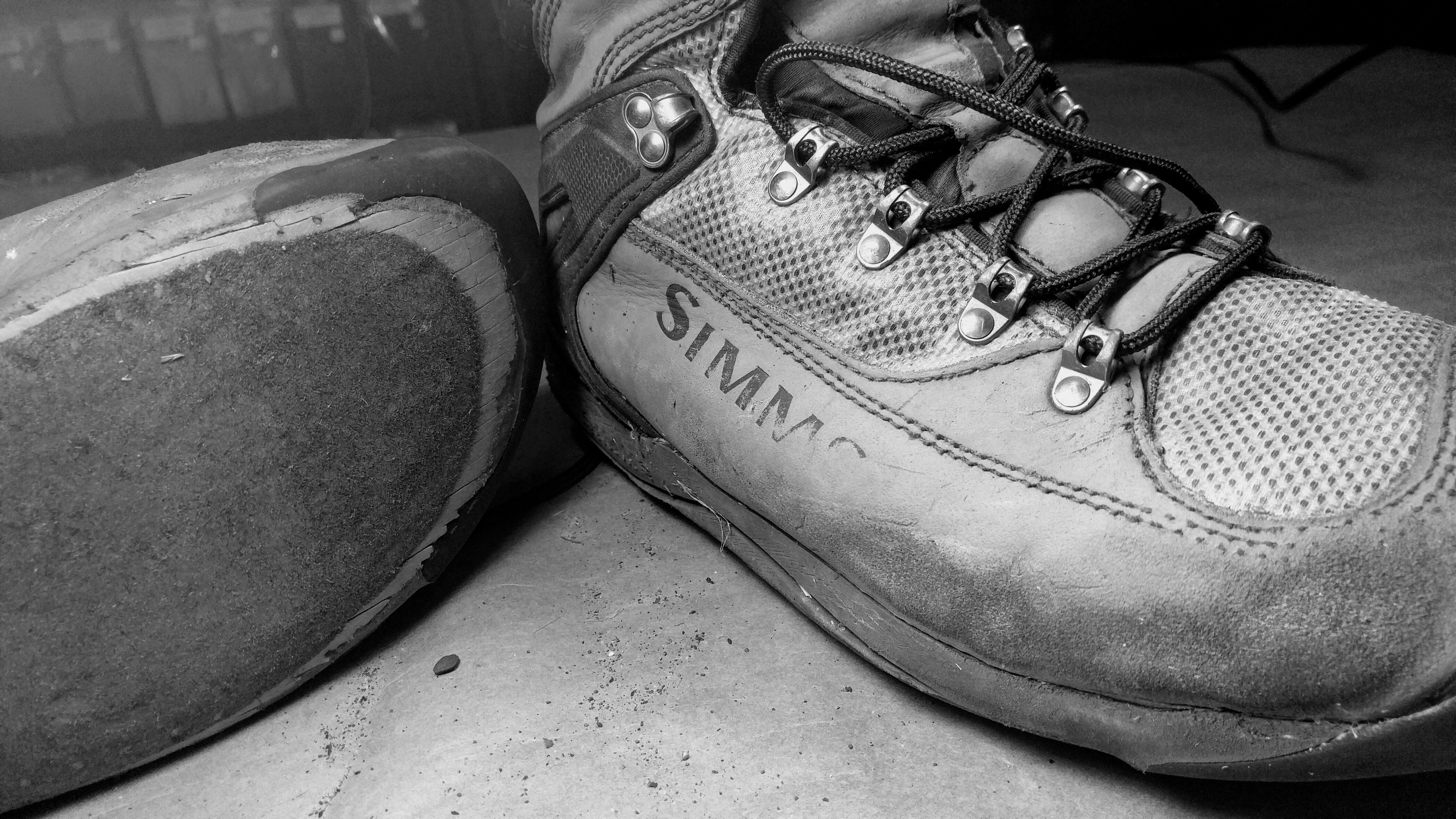
Simms G3 Guide Boot: 800 miles later
Simms G3 Guide Boot: 2 Years of Abuse
(for the down and dirty review just browse through pictures and scroll to the bottom and look for the Recap)
The rain forests of the Olympic Peninsula are perfect proving grounds for today’s “latest and greatest” products as they are tested in the extremes of constant moisture and continuous abuse. We are always fishing harder and pushing farther in search for anadromous fish and rely heavily on our gear too take the brunt of this devout persistence. This is a review of such a case.
The Test Subject: The owner of these boots happens to be a local and good friend of ours who by nature is a swing junky and fishes the OP every chance he gets. About 200 days a year. Fishing mainly the mornings in the winter and summer then driving his beater high gas mileage Subaru Forester back to Port Angeles for work in the late afternoon. Living the dream… He weighs 200lbs 6′ 1″ and hikes/wades faster and farther than anybody I know. During outings, on average he may put 2 to 8 hard earned miles into each trip. With much of that over grapefruit sized river-rock and bushwhacking dense rain forest terrain. To be fair, using a low median of only 2 miles per trip that puts these boots well over 800 miles! I almost want to lower that number to make it more believable, but then this blog would only be partially correct.
The disclaimer would have to be that this is only one pair from one individual.
Before and After
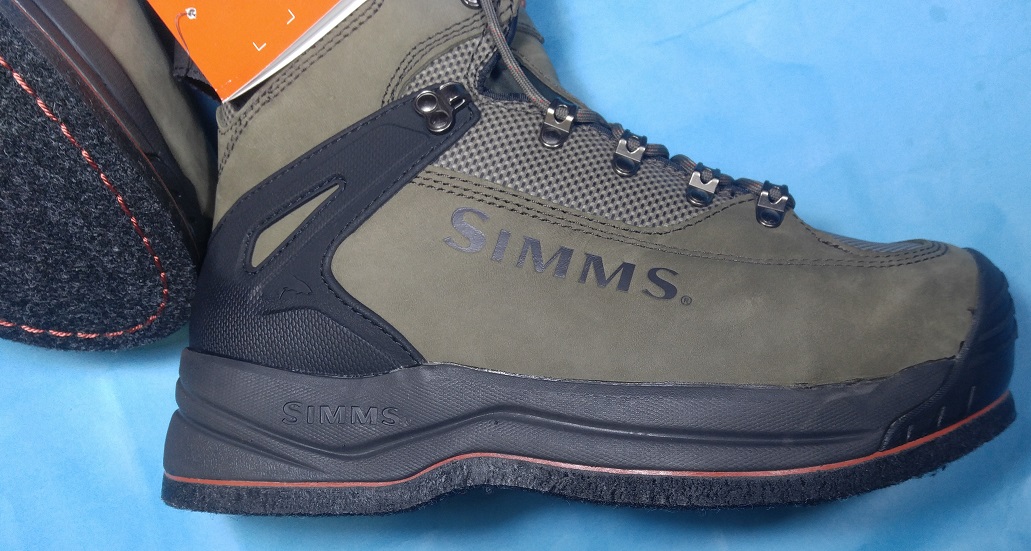
Fresh out of the box
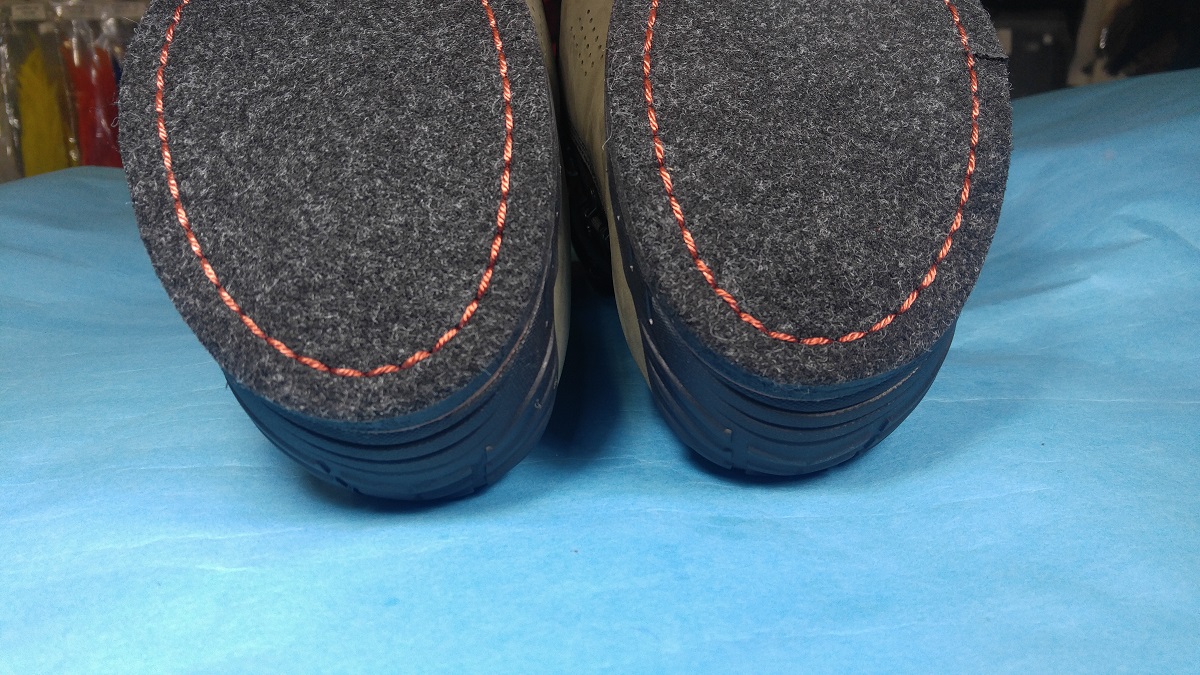
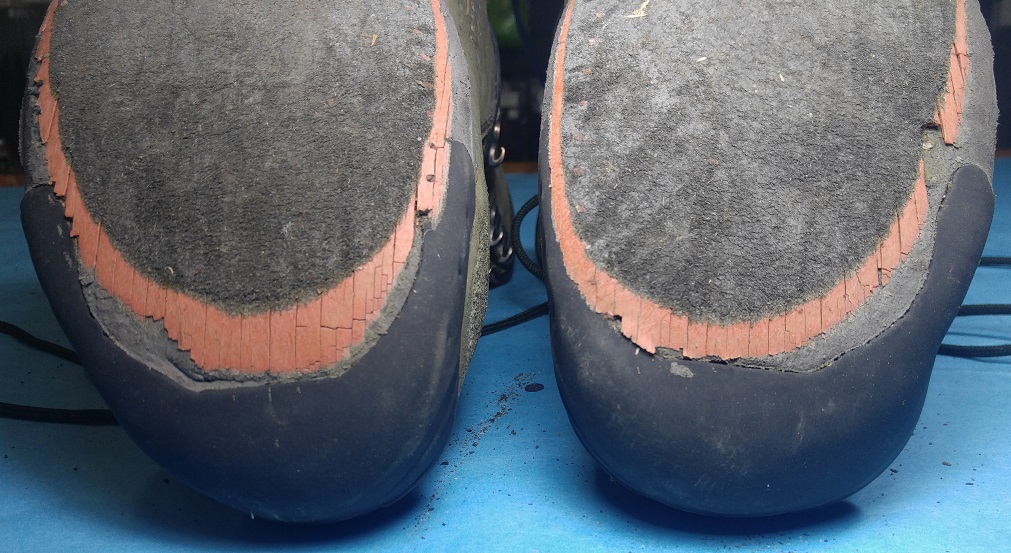
Felt bottoms did not peel or come off!… but you should replace your felt bottoms way before this happens… just saying
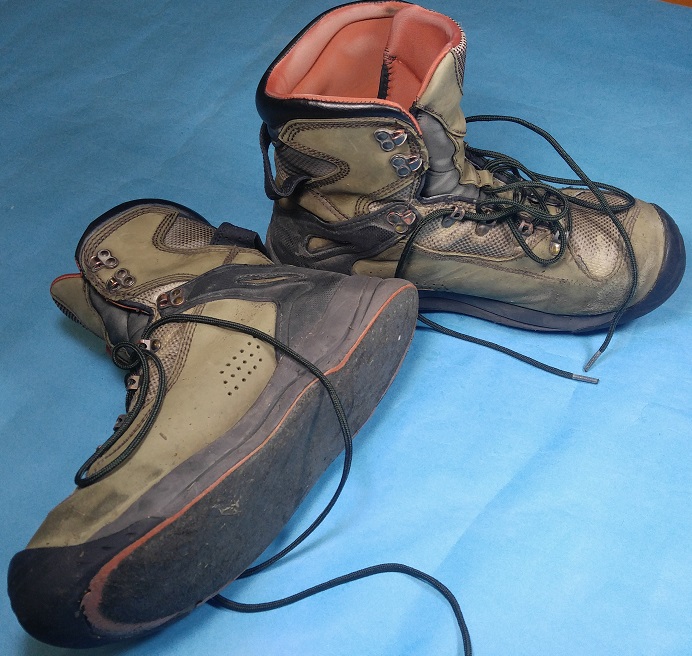
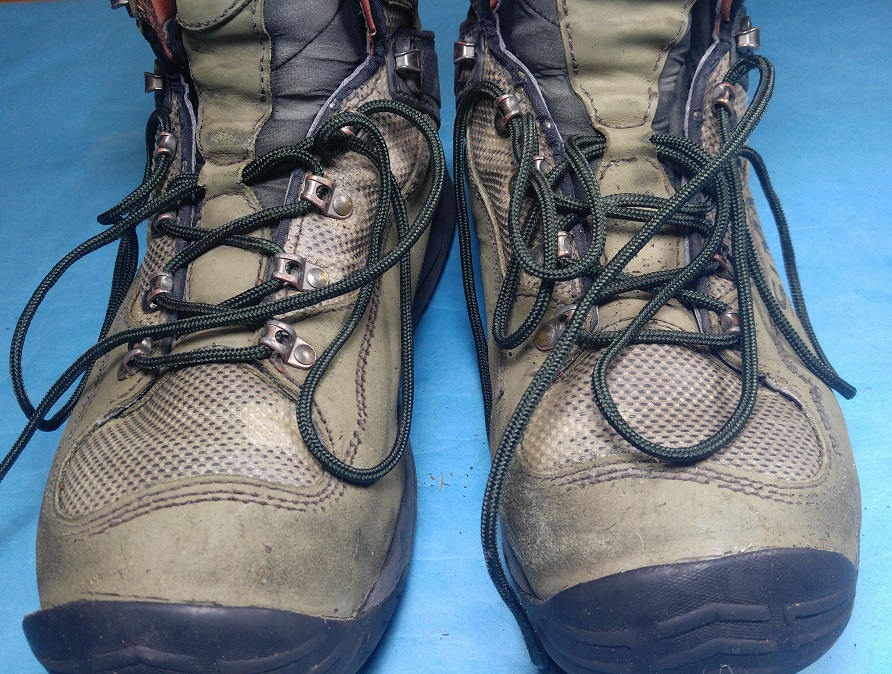
Laces have been replaced multiple times throughout the life of these boots
When looking for a durable boot we usually consider a few factors.
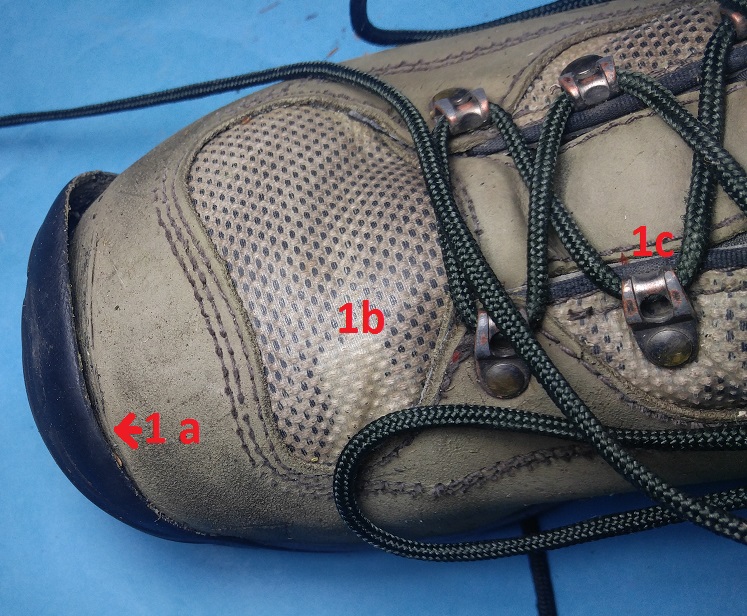
Toe guard failure after (approx mile 600) Not bad though
1a: Seam Strength: anywhere material is glued (such as the toe guard pic 1a) is always prone to peeling, few manufactures get this right. Though this did come unglued toe guard held as it should and with signs of separation around (approx) mile 600. Not bad
1b: TPU Fabric (Thermoplastic Polyurethane): At or just above where the toe flexes is a pressure point and common tear/failure location for many boots we see. Many fail at this wrinkle point. For this pair the TPU (thermoplastic polyurethane 1b) held up as it was claimed to by Simms. It did not separate or crack, nor was it so stiff as too tear or cause seam separation where the TPU meets the soft leather.
1c: Minimal corrosion on all metal lace eyelets and lacing hooks. (boot laces have been replaced 4 times) Also, an important highlight, none of the lace eyelets came undone, broke, or pulled out of the boot.
If you ever have owned a pair of wading boots and had one of these pop or brake on you while lacing up at the river you know how disappointing it can be. They are still firmly in place even after all those miles. This fact must not be over looked and greatly appreciated.
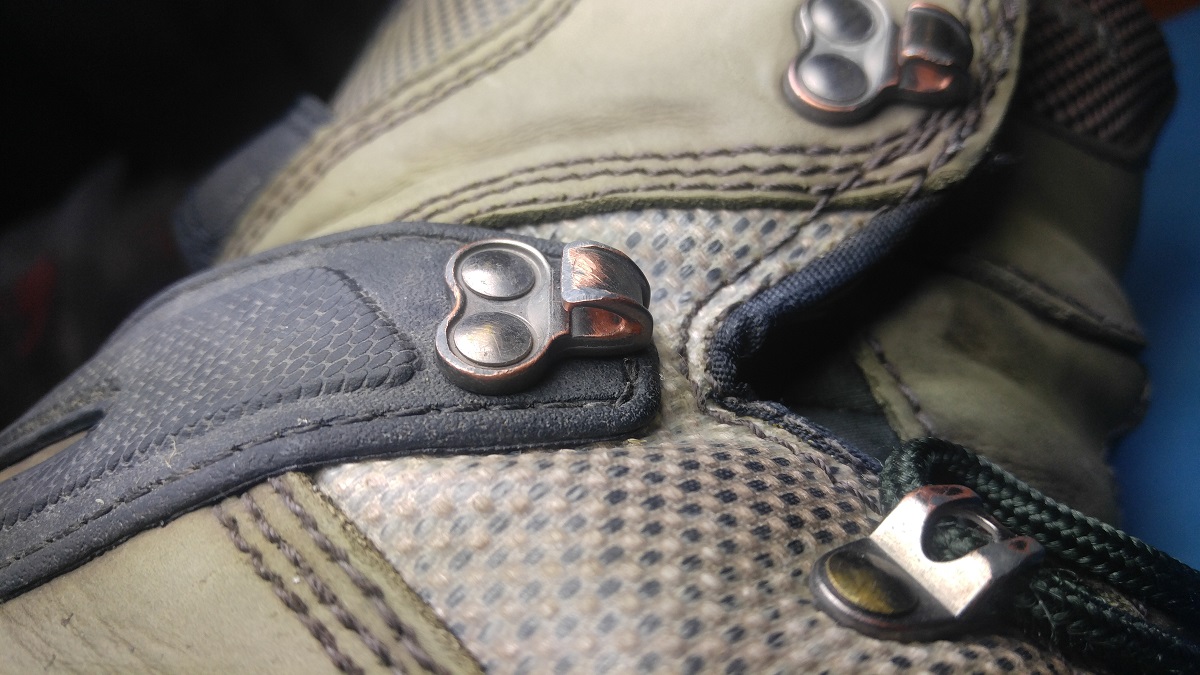
These metal “double hole” boot hooks held nicely w/ superb abrasion resistance, minimal corrosion and no signs of detachment
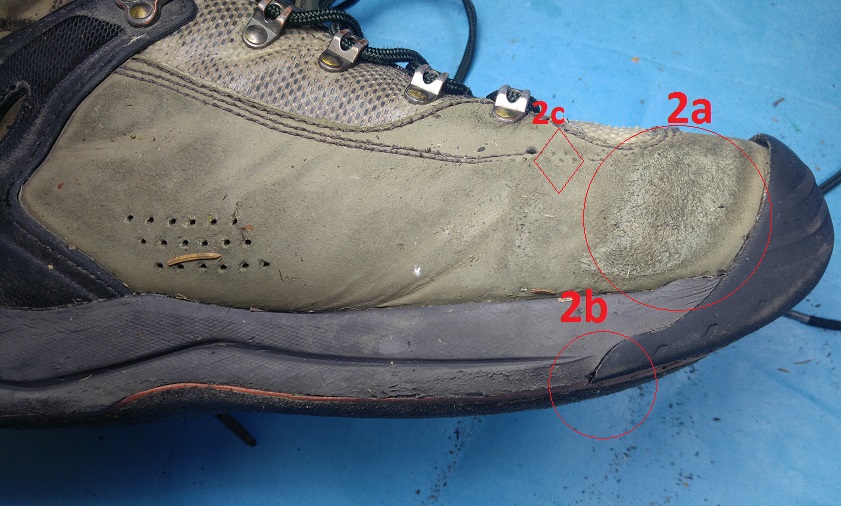
points of high abrasion
2a: Material Durability: On our OP rivers its not uncommon for us to stand or cross through fast riffles, which requires us to wedge our feet between two or three rocks, locking into place, in order to avoid being swept down stream. This puts massive amounts of wear on materials notably around the lower outer sides of the boot.
2b: This location receives continuous amounts of abuse and abrasion while walking and the meeting point of these two joining materials held up superbly! No evidence of peeling.
2c: Threads have worn away around points of abrasion. (Which is expected after all those miles) What we don’t want is for threads to pop at those “pressure points” we keep mentioning. Simms got it right when they put the side stitching high and up above the abrasion line. Notice how there are no threads in this concerning area. (the threads in the ankle support are counter sunk, circled in the next picture).
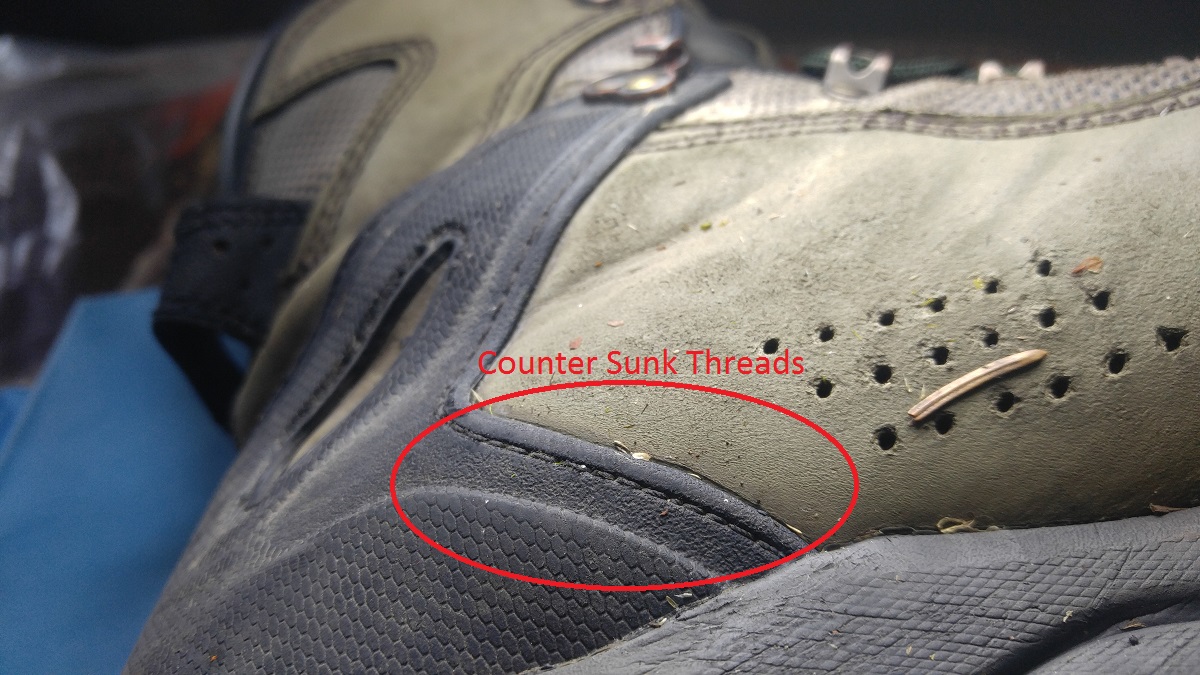
Score on the counter sunk threads! also notice the heal guard is textured incidentally adding traction when wedging feet between rocks
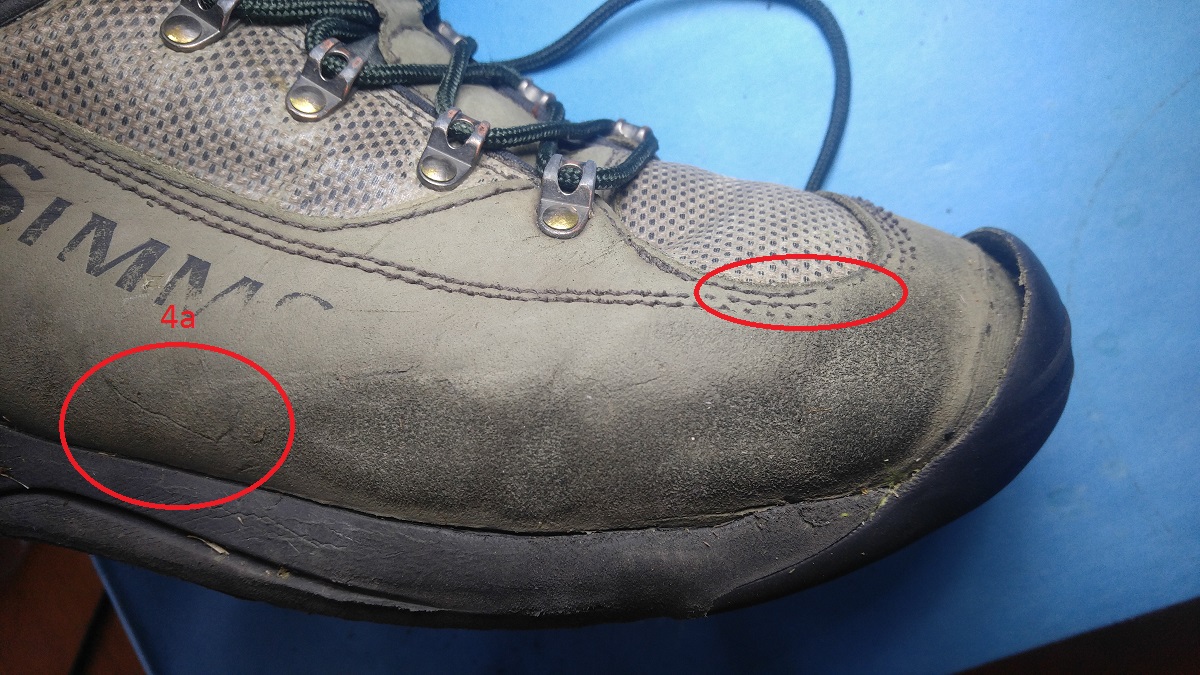
by minimizing the amount of side seams and by putting stitching above the abrasion line, threads/seams tend to last much longer
Can you AquaSeal your stitching? yes, but you will render the Warranty and some agree doing this will ruin the ascetic appeal. Also, unless you keep up on resealing those threads, eventually they will wear out. All in all the threads Simms used seem to of held up moderately well to our expectation.
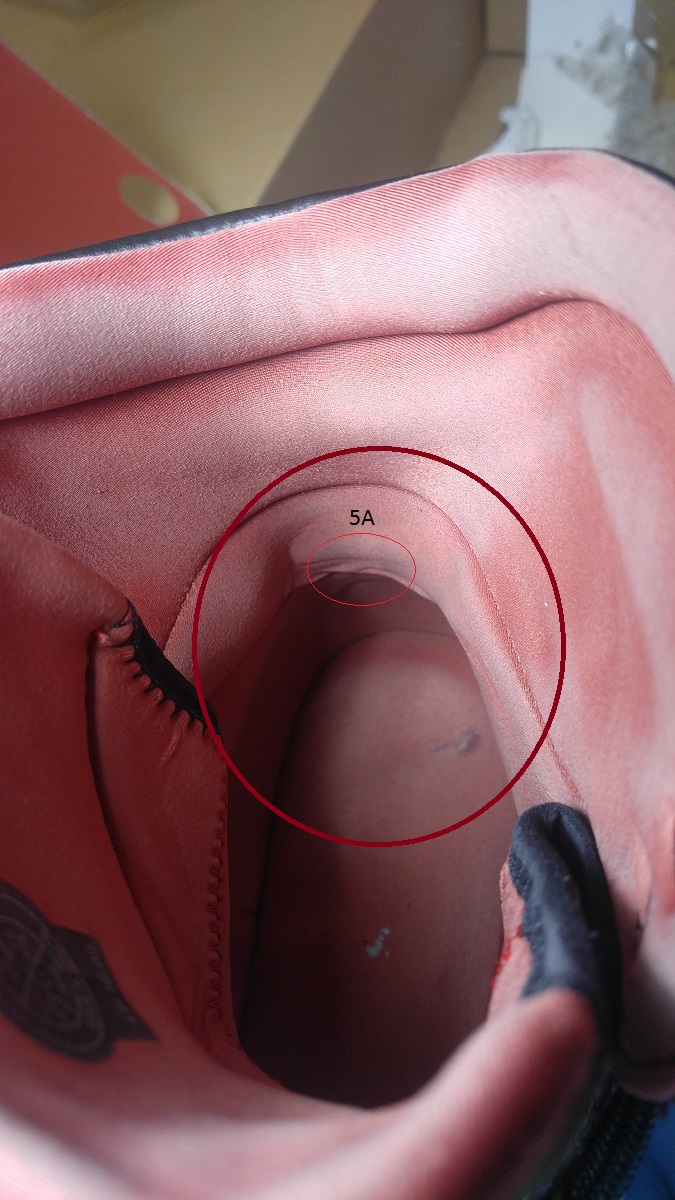
Say AHHH. No signs of significant wear. Always ensure your gravel guards are pulled down and hooked to your laces.
5a: The neoprene lining shows no signs of significant wear in this high friction point. (I have yet to see this location showing extreme signs of wear from a “properly fitted boot” so if you have worn this location out then either you need to find a more correctly sized boot, or just always remember to pull down your gravel guards!)
Comfort and Support. These boots are shaped beautifully, molded perfectly to the contours of the human ankle, so when you slide your foot into the boot its instant comfort and support. As this boot was “broken in” it became a little softer and flexible but did not loose any of its form fitting design and ankle support. After speaking to the owner of these boots he noted they were way more comfortable after they “broke in” and the comfort just got sweeter and sweeter.
(Personally most of us thought the ankle support was too much in the Simms Guide boot and restricted mobility much like that of a ski boot. But once this boot is officially “broken in” (maybe a dozen full day wade trips) the boot becomes very comfortable and gives a hiking and wading confidence as the Simms Guide boot design reinforces the ankle makes for a more sturdy footing in fast water.)
Recap:
- TPU (thermoplastic polyurethane) held up nicely stayed flexible, did not peel or crack.
- Excellent placement of threads (i.e up high and or countersunk) and minimum seams
- Great comfort and and sturdy ankle support that is beautiful once officially broken in and keeps getting better to the last day
- Boot lace hooks and eyelets are corrosion resistant and did not pop out of place.
- Felt bottoms did not peel off… (just check out the pic again to appreciate how well the felt sicks)
They say you can tell a fisherman’s story just by looking at the boots on his/her feet. These boots have seen the miles and tell of many cold hard- earned days searching for anadromous gold on the OP rivers.
Simms G3 Guide Boot: Vibram Tread w/ star cleat review. Coming Spring 2017
For inquiries call (360)417-0937 or to visit our online store WatersWest store
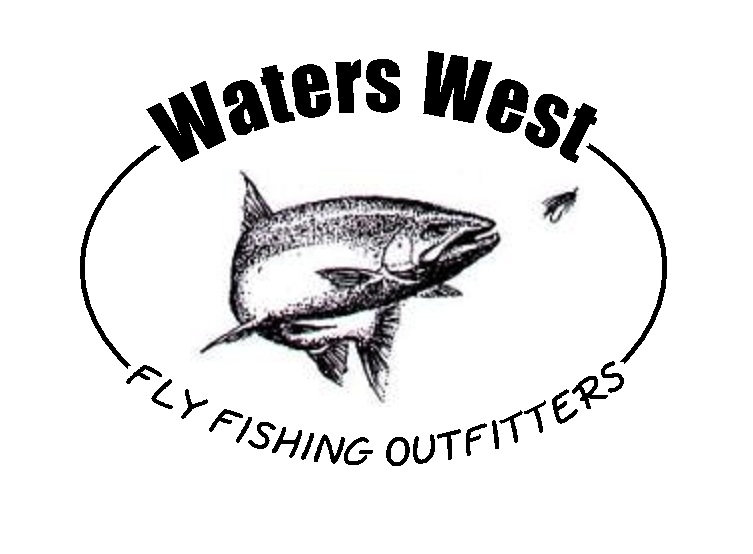
Happy Trails!
